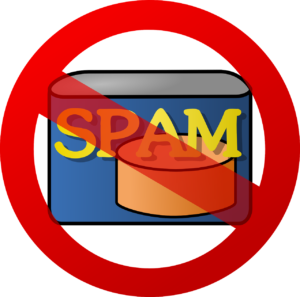The CAN-SPAM Act lays out some very basic guidelines designed to widen the gap between legitimate email marketers (like you) and the dredges of the junk-mail underbelly (not you). The CAN-SPAM Act  does not apply to “relationship” emails (like account updates or invoices you send to paying customers or newsletters you send to paying subscribers) but squarely targets “commercial” emails – basically any email designed to promote a product or service.
does not apply to “relationship” emails (like account updates or invoices you send to paying customers or newsletters you send to paying subscribers) but squarely targets “commercial” emails – basically any email designed to promote a product or service.
So here they are, the basics of the CAN-SPAM Act:
1. Clearly identify yourself.
The main thrust of CAN-SPAM is to prevent people from sending fraudulent, deceptive emails. So the law begins with the obvious: if you send a commercial email, make sure recipients know who sent it. Your “from” email address and name should be accurate and honest and allow people to email you back.
2. Clearly identify the content of your email.
Again, designed to combat deceptive emails. CAN-SPAM prohibits the use of misleading subject lines in commercial emails and calls for advertisement emails to be clearly marked as such, though the law does not call for any specific method (like including “ADV” in the subject line). Crafting clear, concise (and honest) subject lines is something any serious communicator/marketer should be doing anyway.
3. Don’t use questionable tactics to build your audience list.
This is aimed at junk mailers who grab email addresses off the Web using a robotic script, or who create “dictionary attacks” to randomly generate addresses. (It also leaves anyone who is grabbing email addresses one by one – without a script – in a big gray area, so we strongly advise against that.) So long as you’re sending to people with whom you have a business relationship (or who have actively requested your emails), you have nothing to worry about.
4. Give recipients the ability to contact you directly.
Your Recipients need to be able contact you two ways: by emailing you back (using your from address) or by contacting you the old-fashioned way (using your physical address). Unlike junk mailers who are doing everything they can to hide, you’re doing everything you can to be noticed, to encourage your subscribers to click, call, email or visit.
5. Give recipients the ability to unsubscribe at any time.
CAN-SPAM requires that you offer a clear and visible opt-out feature and (more importantly) that you honor all such requests within 10 days.
You can read the full CAN-SPAM Act on the Federal Trade Commission web site.